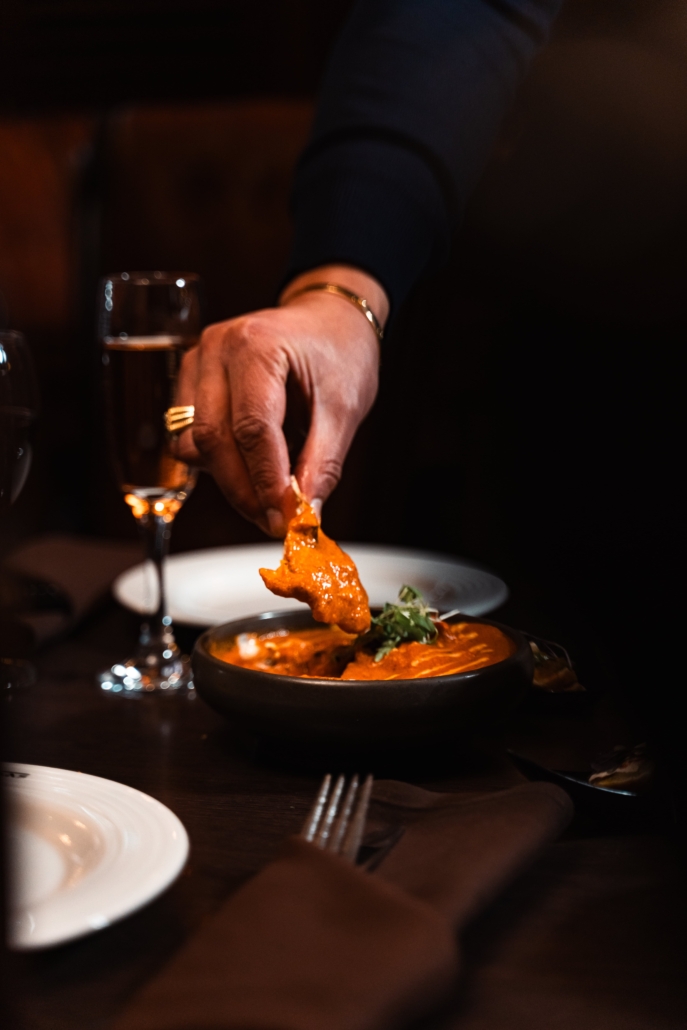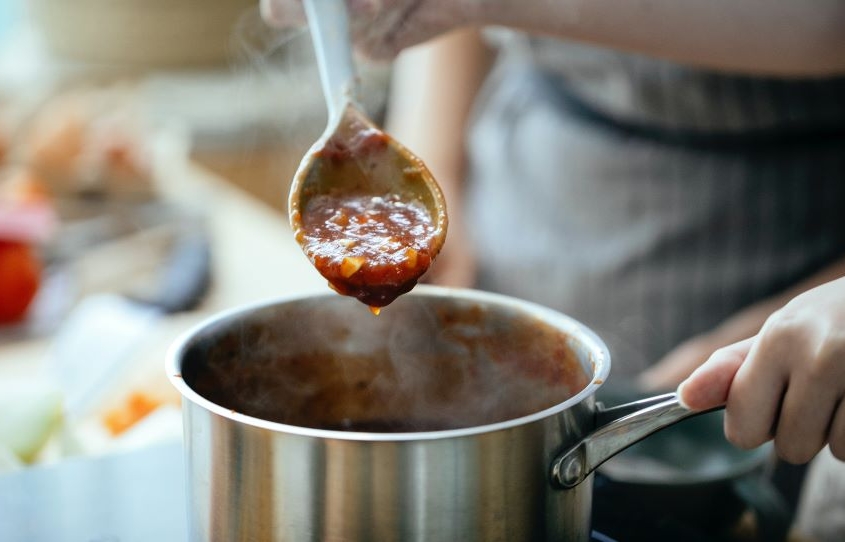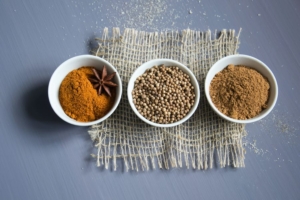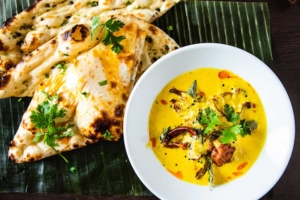Whether you’ve been cooking Indian cuisine for years or just starting to experiment, there are three rules you can’t get by without. This is the same in the Itihaas kitchen as in yours at home, so get up to speed.
Impress your guests with food full of flavour, distinctive spice and hot, fluffy roti. Read on for a basic marinade recipe, roti tips and more.
1. The longer you marinate, the stronger the flavour.
Marinate meat, tofu and paneer overnight for the best results.
In Indian cooking, the flavour builds up layer by layer. The marinade is the first layer, absorbed into the meat/protein, creating a rounded flavour that affects the whole dish. By marinating ingredients for at least 6 hours, the meat will have this strong taste of the herbs and spices all the way through. Other layers include the sauce and the garnish.
Marinades also tenderise meat, leading to a softer, succulent meal. It keeps meats like chicken from drying out during cooking and shortens their cooking time.
The acidic element, like lime juice, makes grilling meats healthier. The extreme heat of grills can cause amino acids in meats to react and create harmful chemicals. Acidic marinades break down the amino acids before cooking, making this reaction less likely.
Do not marinate meats for longer than 2 days. The breakdown of amino acids and muscle protein in the marinade will occur for the whole time. After two days, this can give the meat an unpleasant, mushy texture.
Basic Marinade Recipe
Ingredients
A good marinade includes oils, spices, herbs and acids, such as citrus juice. Mix and match from the lists below to create your own perfect marinade for Indian cooking.
Base
- Yoghurt
- Vegetable Oil
Spices, aromatics and herbs
- Garlic (minced or crushed)
- Ginger (grated)
- Garam Masala
- Salt
- Red Chili Powder
- Turmeric
- Methi / Fenugreek
- Coriander
- Jeera / Cumin
- Black Pepper
Acids
- Lime juice
- Fresh coriander
- Lemon juice
Instructions
You can mix and match the herbs and spices depending on taste, but ensure you use plenty! There are no “pinches” in Indian cooking.
- Prepare your meat as you normally would before cooking, removing any part you do not want to include such as loose skin. If you are using Tofu, drain the brine and pat dry with paper towels.
- Simply blend all of the marinade ingredients in a large bowl.
- Add the protein and toss or stir until the pieces are completely and evenly coated in the marinade.
- Store in a sealed container for 6-24 hours before cooking.
2. Use Whole Spices.
Powdered spices take up less storage space, but they are not the best choice. Once dried and ground, spices lose their potency quickly. This is because flavour comes from the volatile oils in the plant matter, which evaporate and degrade once the spice has been ground or grated.
Whole spices stay fresh for up to 2 years, and are a cheaper option when buying for a domestic kitchen.
To get the distinctive flavour of each spice in your cooking, use whole spices. You can grind them in a mortar and pestle or grate them if it is a root such as ginger or turmeric. For ingredients such as star anise or cardamom, simply throw them into the dish whole. You can remove them before serving to avoid guests eating them.
3. Cook Rotis Last and Serve HOT
The hotter your rotis, the softer they are. When chapatis cool down, they stiffen up and become less easy to tear.
Make and knead the dough before you start cooking, and keep it to one side under a clean damp cloth. Then, when the dish is nearly ready, heat your skillet (or tawa) and begin cooking the roti.
- Flour your surface and your rolling pin with atta (wheat flour)
- Break the dough into 12-20 small balls
- Roll one ball evenly into a thin circle. Repeat until you have all the roti ready to cook. This is the best way for beginners so you can keep an eye on them during cooking.
- Place the first roti on the tawa or skillet
- After 15-30 seconds, you should see some bubbles on the top side: this is the sign to turn the roti over.
- Cook the second side for longer, lifting with tongs to see if it has browned.
- When there are brown spots, remove the roti from the tawa and place it directly on the flame to finish. It should puff up in a few seconds. Use tongs to move it to the plate.
Once you have a plate with enough for guests to have 1 roti each, serve your guests immediately. Then cook the next batch of roti and join them at the table.
Other Rules for Indian Cooking
- Soak your lentils for up to 2 hours before making dhal.
- Cook a variety of dishes when you have guests: include meat, fish, and vegan options, with a range of spice intensity.
- Balance flavours with sides such as cucumber raita and salad
- Don’t forget chutneys: mango chutney is a firm favourite, adding a pop of sweetness to any plate.
So now you know what we think are the keys to cooking proper Indian cuisine. It’s worth asking friends or family about their cooking, as well. Many people are more than happy to share their recipes and tricks to help someone learn to make Indian food.
If all else fails, you can order takeaway from Itihaas to please your guests. Don’t worry: practice makes perfect.





